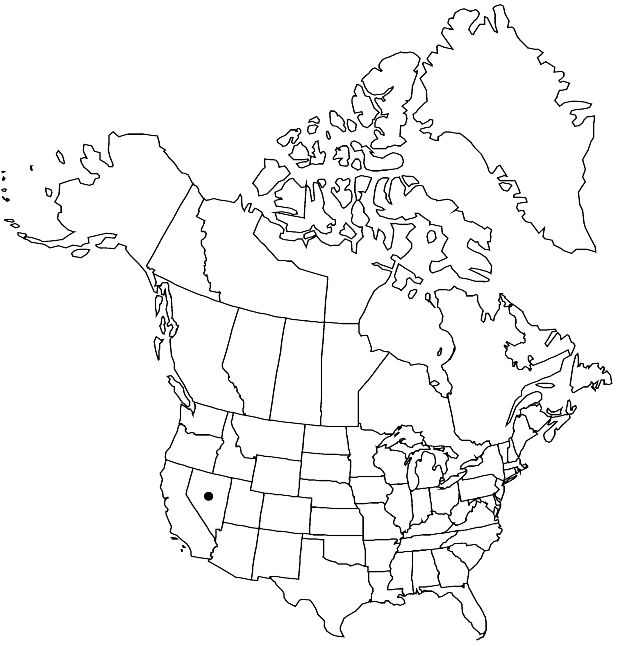Draba arida
Revis. Drabas W. N. Amer., 52, plate 3, fig. 23. 1941.
Perennials; (cespitose); caudex branched (with persistent leaf remains, branches relatively short); not scapose. Stems usually unbranched, (0.3–)0.4–1 dm, pubescent throughout, trichomes simple and 2-rayed, 0.4–1.4 mm, and shorter, 2–4-rayed ones, 0.05–0.3 mm. Basal leaves rosulate; subsessile; petiole not ciliate; blade obovate to spatulate or oblanceolate, 0.6–1.9(–2.4) cm × 2–5(–8) mm, (base ciliate, trichomes simple and 2-rayed), margins entire, surfaces abaxially pubescent with stalked, (2–)4-rayed trichomes, 0.3–0.6 mm, adaxially with simple and stalked, 2-rayed trichomes, 0.3–0.6 mm, and smaller, 3- or 4-rayed ones. Cauline leaves (1 or) 2–5; sessile; blade oblong to oblanceolate or ovate, margins entire, surfaces pubescent as basal. Racemes 12–40-flowered, ebracteate, slightly elongated in fruit; rachis not flexuous, pubescent, trichomes simple and 2–4-rayed. Fruiting pedicels horizontal to divaricate-ascending, straight, (3–)4–8 mm, pubescent, trichomes simple and 2–4-rayed (0.1–0.5 mm). Flowers: sepals broadly ovate, 2–2.7 mm, pubescent, (trichomes simple and short-stalked, 2–4-rayed); petals yellow, spatulate to oblanceolate, 3.5–5 × 1.4–2 mm; anthers oblong, 0.4–0.6 mm. Fruits elliptic or ovate to lanceolate, plane, slightly inflated basally, 4–7 × 2.5–3.5 mm; valves pubescent, trichomes simple and stalked, 2–4-rayed, 0.05–0.4 mm; ovules 8–12 per ovary; style 0.5–1.2(–1.4) mm. Seeds ovoid, 1–1.4 × 0.6–0.8 mm. 2n = 24.
Phenology: Flowering May–Jul.
Habitat: Rock crevices and gravelly soil in conifer and subalpine shrub communities
Elevation: 2100-3400 m
Discussion
Of conservation concern.
Draba arida is a sexually reproducing, diploid member of the D. ventosa complex that may have been involved in the origin of the more widespread apomictic triploids (M. A. Beilstein and M. D. Windham 2003). The species is known from the Monitor, Toiyabe, and Toquima ranges in Lander and Nye counties.
Selected References
None.
